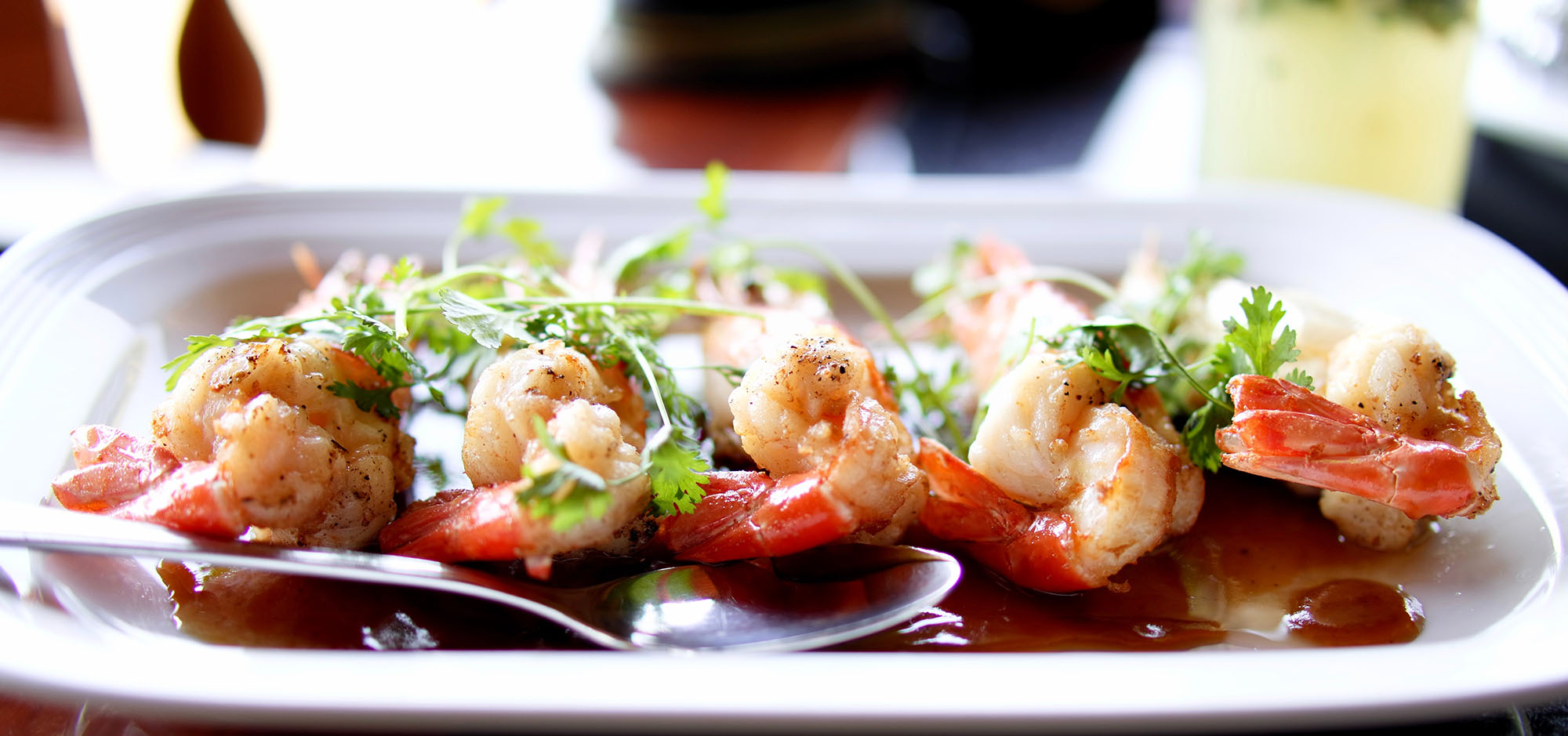Like most types of seafood, shrimp puts a wealth of health benefits on your plate. They are low in carbs, low in calories, and packed with protein along with more than 20 different vitamins and minerals. However, factors like preparation can decrease the nutritional value of this sumptuous shellfish. If you work hard to keep your diet healthy, here's what you should know about the healthiest ways to enjoy shrimp (and a few shrimp dishes that aren't so nutritious).
Farm-Raised vs. Wild-Caught Shrimp
If you pay attention to sustainability in seafood, you know it's important to understand exactly where your shrimp originates. Most shrimp sold in the United States was raised on a farm in another country and imported here for sale. While concerns exist about antibiotics in these farm-raised shrimp, the Food and Drug Administration prohibits the import of seafood treated with these medications. Although FDA testing eliminates most antibiotic-tainted shrimp, you may inadvertently consume some antibiotics if you buy this type of seafood. If you want to skirt the issue completely, opt for wild-caught shrimp over farmed varieties.
Signs of Poor Quality Seafood
Purchasing shrimp can be daunting if you don't usually buy and cook seafood at home. Start by visiting a reputable fish market or grocer. They should be able to provide information about where the shrimp came from and how it was handled along the way. Damaged or infected seafood can make you ill.
Shrimp should never have an ammonia odor or strong, fishy smell. These scents indicate that the seafood is past its prime and should not be consumed. A slight salty or sealike smell is expected. As for color, look for raw shrimp with light pink, tan, pale gray or translucent shells. Do not purchase shrimp with black discoloration. If you buy cooked shrimp, it should be slightly red or pink with a firm texture.
You can also look for signs that the seafood has been reviewed and quality checked. Read the label to see if the shrimp is sustainably farmed or certified by the Marine Stewardship Council.
The Cholesterol Question
If you have concerns about your cholesterol, you might be concerned about the relatively high level of dietary cholesterol in shrimp. The American Heart Association and the USDA both recommend no more than 300 mg of cholesterol daily for healthy adults. That's about the amount in 6 oz of shrimp or twice the ideal portion size.
As long as you aren't eating shrimp for every meal, the shellfish shouldn't affect your heart health. In fact, researchers also note that shrimp has heart-healthy omega-3 fatty acids and can raise the levels of beneficial (LDL) cholesterol in the blood. However, talk to your doctor before taking the plunge. He or she can provide information specific to your unique nutritional needs.
Nutritious Dishes
The healthiest shrimp dishes are grilled, baked, steamed or broiled. Adding shrimp to creamy sauces or deep-frying these crustaceans will negate many of the health benefits because of the high calorie and fat content of these preparations. Avoid sauteing or frying shrimp in oil, as doing so will add unhealthy trans fat to your plate.
Adding salt can also decrease the nutritional value of your shrimp, especially if you follow a low-salt diet because of high blood pressure or another health concern. Instead, season your shrimp with garlic and fresh herbs. Lemon or lime juice adds lots of flavor without unwanted calories or salt. For best results, pair seafood with veggies or brown rice. While pasta is a popular pairing, processed carbohydrates have limited nutritional value.
If you've never eaten shrimp before, keep in mind that this shellfish is one of the most common allergens. Start slow when you consume shrimp for the first time and seek medical attention if you develop a skin rash, congestion or other allergic symptoms after dining.


I like how you make it simple. Very helpful!